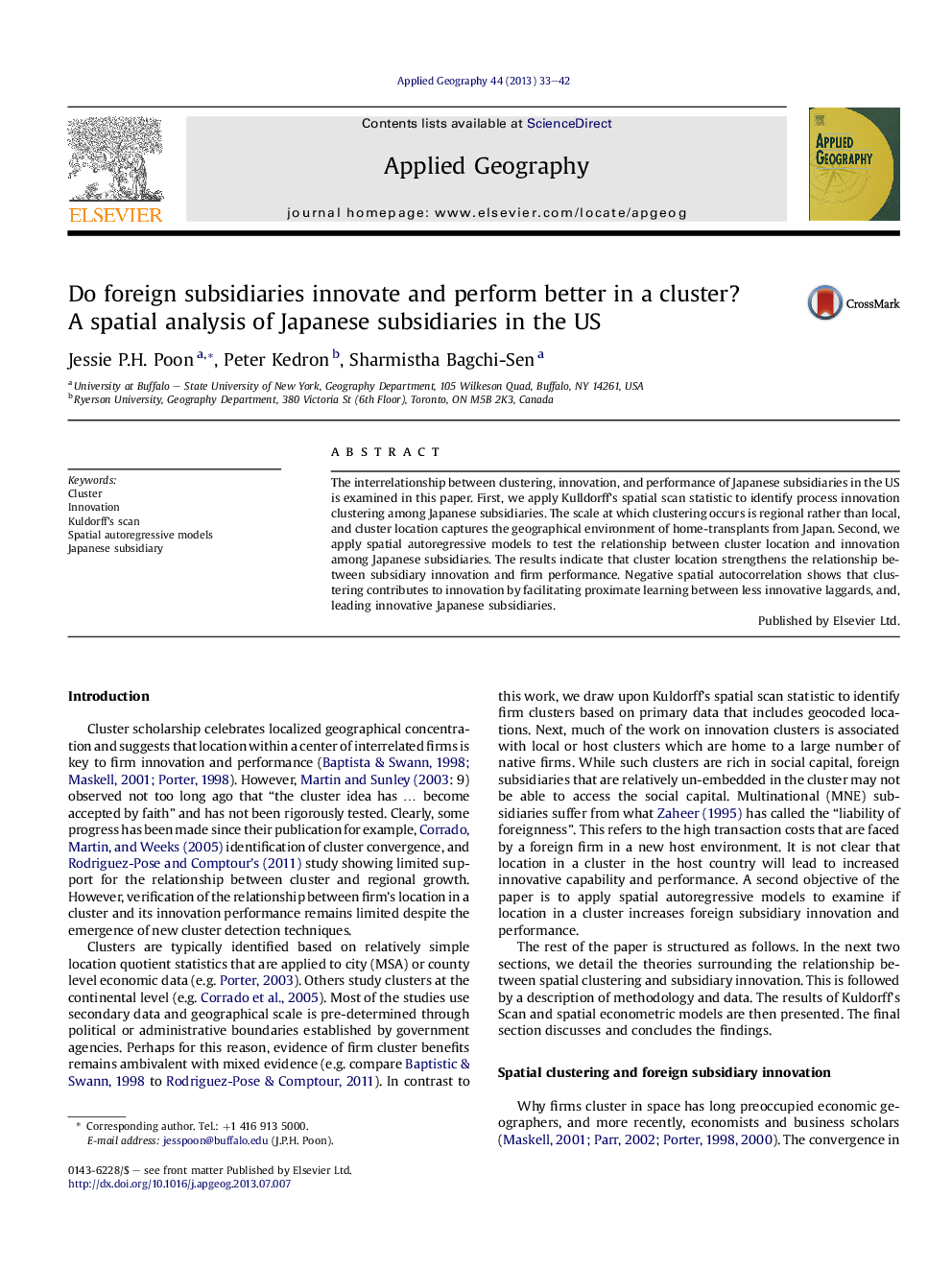| Article ID | Journal | Published Year | Pages | File Type |
|---|---|---|---|---|
| 83651 | Applied Geography | 2013 | 10 Pages |
•Detection of Japanese innovation cluster using Kulldorff's spatial scan.•SAR model finds positive link between cluster location, performance, and innovation.•Regional scale cluster advantages of foreign subsidiaries.•Technological catch-up among co-located heterogeneous subsidiaries.
The interrelationship between clustering, innovation, and performance of Japanese subsidiaries in the US is examined in this paper. First, we apply Kulldorff's spatial scan statistic to identify process innovation clustering among Japanese subsidiaries. The scale at which clustering occurs is regional rather than local, and cluster location captures the geographical environment of home-transplants from Japan. Second, we apply spatial autoregressive models to test the relationship between cluster location and innovation among Japanese subsidiaries. The results indicate that cluster location strengthens the relationship between subsidiary innovation and firm performance. Negative spatial autocorrelation shows that clustering contributes to innovation by facilitating proximate learning between less innovative laggards, and, leading innovative Japanese subsidiaries.
